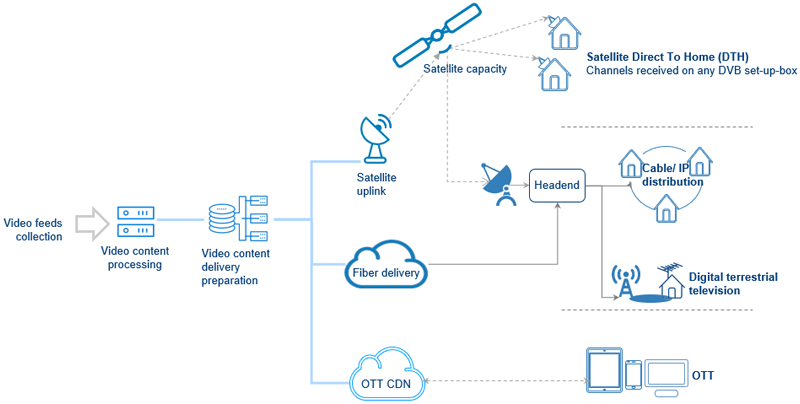The smart Trick of Apollo Group Tv That Nobody is Discussing
The smart Trick of Apollo Group Tv That Nobody is Discussing
Blog Article
How Apollo Group Tv can Save You Time, Stress, and Money.
Table of ContentsThe Apollo Group Tv StatementsApollo Group Tv Fundamentals ExplainedThe Buzz on Apollo Group TvThe 45-Second Trick For Apollo Group Tv
In this situation, as opposed to having three-minute commercial spots during a 30-minute television program, television programming may alter to one where a consumer will be needed to have a month-to-month membership, to make sure that they cen sight targeted banner ads. This sort of marketing currently takes place online, and the quantity of information tv firms accumulate enables them to do a lot the very same.Describe the significant patterns among the broadcasting and cable networks. Popular radio shows such as cops dramatization Dragnet and western cowboy collection Gunsmoke were adjusted for tv, and brand-new TV programs were sponsored by single marketers, just as radio shows had been.
Today, the television sector is even more intricate. Programs are funded by numerous marketers; programs is controlled by significant media corporations; and the 3 significant networks no more dominate the airwaves yet instead share their audiences with numerous cable networks. Several variables make up these fads within the market, consisting of technological growths, government regulations, and the creation of brand-new networks.

Apollo Group Tv Can Be Fun For Anyone
Also public television has actually ended up being based on the influence of advertising and marketing. Established in 1969, (PBS) developed out of a record by the Carnegie Commission on Educational Television, which took a look at the role of educational, noncommercial tv on culture. The report suggested that the federal government financing public television in order to supply diversity of programs during the network eraa solution developed "not to offer products" however to "enhance citizenship and public solution (McCauley, 2003)." Public tv was additionally meant to give universal accessibility to television for customers in backwoods or audiences that can not afford to pay for exclusive tv solutions.
The duration between 1950 and 1970 is traditionally identified as the. Apart from a little section of airtime regulated by public tv, the three significant networks (referred to as the Big 3) controlled the tv sector, collectively look these up making up greater than 95 percent of prime-time watching. In 1986, Rupert Murdoch, the head of international company News Corp, launched the Fox network, challenging the supremacy of the Big 3.
Targeting young and minority audiences with programs such as Buffy the Vampire Killer, Moesha, Dawson's Creek, and The Wayans Bros., the new networks wished to attract stations away from their old network affiliations. Rather than repeating the success of Fox, UPN and WB struggled to make an effect. Not able to bring in many affiliate terminals, both recently established networks got to less families than their larger rivals because they were impossible in some smaller cities.
This decision led the way for the advancement of cord flick networks, adding to the exponential growth of cord in the 1980s and 1990s. apollo tv group. Further deregulation of cable in the 1984 Cable Communications Plan Act removed restrictions on cable rates, enabling drivers to bill what they wanted for cable solutions as long as there was reliable competitors to the service (a standard that over 90 percent of all cable television markets might meet)
Not known Facts About Apollo Group Tv

Having actually developed the first "superstation," Turner expanded his realm by establishing 24-hour information network CNN in 1980. At the end of the year, 28 national programming services were offered, and the wire revolution had actually started. Over the next decade, the market went through a period of rapid growth and popularity, and by 1994 viewers can pick from 94 standard and 20 costs cord services.
Figure 9 - https://www.metal-archives.com/users/apollogtv01.16 Raised competition from cord networks has created a steady decline in the networks' target market rankings. During the 1950s, the cost of generating a single tv program boosted as programs ended up being much longer and production prices skyrocketed. Sponsorship on network television moved from solitary sponsorship, in which a program was totally supported and generated by one advertiser, to several sponsorship, in which marketers bought 1- or 2-minute spots on the show
Each action should be a minimum of one paragraph. Choose one of the Big Four networks and print out its once a week programs timetable. Watch the network's prime-time programs over the training course of a week, noting the target group for every program. Observe the marketing sponsors that sustain each program and compare just how the products and services fit with the intended target market.
All About Apollo Group Tv

Straight TV, usually referred to as conventional broadcast television, encompasses wire and satellite tv. It's called "straight" since web content complies with an established programs routine, unlike on-demand content which the specific audience chooses to view based upon their own preferences and schedule. So, when you ask, "What is linear TV?", think about it as the timeless method of enjoying TV that has been around for decades.
Report this page